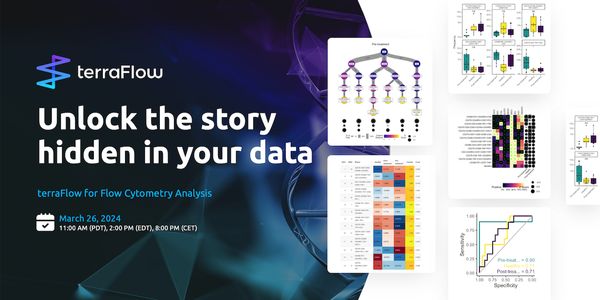Applications Manager, Spatial Biology Image Analysis
BIOGRAPHY
Unveiling Tumor Immune Landscape: Using Multiplexed Whole-Tissue Imaging and AI-Powered Spatial Analysis
Speaker
Event Date & Time
Date: May 15, 2024
Time: 9:00 AM (PDT), 12:00 PM (EDT), 6:00 PM (CEST)
Abstract
Immunotherapies, including immune checkpoint inhibitors, have emerged as promising treatments for advanced cancers. However, a subset of patients exhibits resistance to such therapies, and the precise mechanisms underlying tumor immune resistance are not fully elucidated. Importantly, the optimal therapeutic efficacy of a given treatment in cancer patients is influenced by tumor-associated immunosuppressive mechanisms within the tumor microenvironment (TME). The spatial landscape of tumor-infiltrating immune cells, among other molecular signatures, also plays a role in treatment response.
To examine mammalian immunosuppressive mechanisms, we studied the tumor-immune landscape in three syngeneic murine cancer models utilizing whole tissue spatial multiplexing analysis. Cell DIVE multiplexed whole tissue images were generated from FFPE tissue sections that were iteratively stained with 30 Cell Signaling Technology (CST) antibodies to detect key proteins in the TME, enabling immune cell detection and phenotyping. This approach allowed the study of the immune landscape and molecular characteristics as delineated by the expression of the hypoxia marker, Glut1, which is linked with metabolic reprogramming and regulation of immune activation within the TME.
Using clustering and spatial analysis powered by AIVIA, we demonstrate differential enrichment of immunosuppressive cell types such as tumor-associated macrophages (TAMs) within Glut1-rich regions and T-regulatory cells (Tregs), within Glut1-poor regions. Such tumor-associated immunosuppressive cell types may contribute to therapeutic resistance by promoting a pro-tumorigenic environment.
Overall, these findings improve understanding of the interactions between tumors, immune cells and metabolic reprograming within the TME and the methods detailed here may help researchers in the development of therapeutic combinations targeting immunosuppressive pathways.
Learning Objectives
- Explore how multiplexed whole tissue imaging can be utilized to probe key molecular players within the tumor microenvironment.
- Examine the tumor-immune landscape using multiplexed immunofluorescence Cell DIVE™ images of CST antibodies on syngeneic murine tumor models of various origins.
- Identify potential tumor-associated immunosuppressive cell subtypes and their spatial interactions with various cell types and metabolic markers using AI-powered image analysis.
- Summarize how multiplexed imaging and spatial analysis provide new insights into tumor heterogeneity, enabling identification of interactions within immune cell types, that may help define new markers for future therapy.
Webinars will be available for unlimited on-demand viewing after live event.
You May Also Like
NOV 08, 2023 | 8:00 AM
Generating Insights into tissue microenvironments is crucial to our understanding of normal and abnormal tissue development such as during cancer progression. Spatial biology methods using m...
Loading Comments...















































